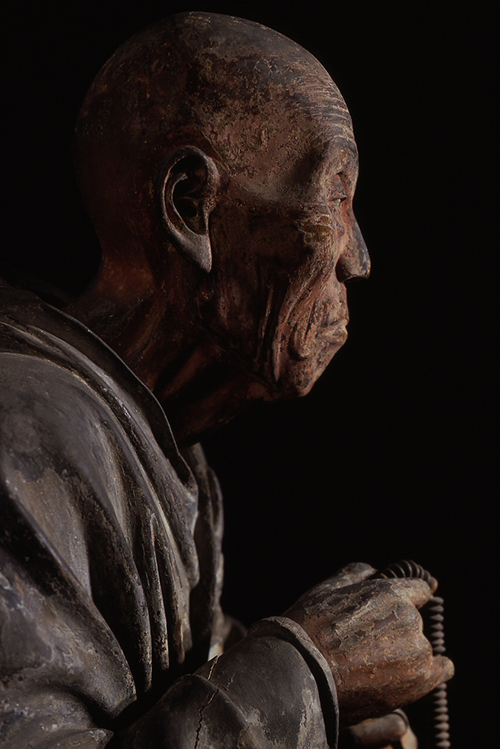12-14th century

Early in the Heian period cracks appeared in back of the Great Buddha so a mound of earth was erected behind it to keep it from toppling over. In 855 the head fell off in an earthquake and the statue had to be repaired.
The Great Buddha Hall as well as all the other compounds on the grounds of Tōdai-ji repeatedly had to be repaired after fires and natural disasters. In order to obtain the financial resources for these activities, as well as to support the study of Buddhist doctrine, Tōdai-ji managed estates around the country. By the end of the Heian period, however, there arose great friction between the temple and the powerful Taira clan over these estates and in 1180 fires set by the forces of Taira no Shigehira reduced most of the temple to ashes.
The figure responsible for most of the reconstruction of the temple was the monk Chōgen. From the time he was appointed Chief Solicitor in 1181 at the age of 61, Chōgen spent over twenty years restoring the temple, receiving financial assistance from Emperor Go-Shirakawa and the Shōgun, Minamoto no Yoritomo, among others.
Chōgen began by repairing the head and left hand of the Great Buddha with the assistance of Chen He Qing, a Song caster, and rededicated the image in 1185. He then turned his attention to the reconstruction of the Great Buddha Hall. At first, Chōgen had difficulty in obtaining the necessary lumber; however, once the government provided the temple with lands in the province of Suō (Yamaguchi Prefecture) the work proceeded quickly. The ceremony celebrating the completion of the hall was held in 1195. Subsequently the various other compounds within the complex were completed and the temple flourished.

